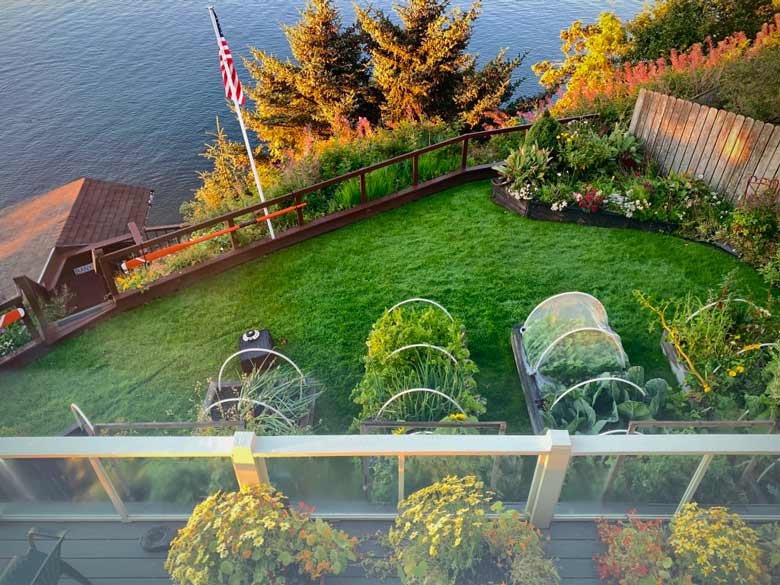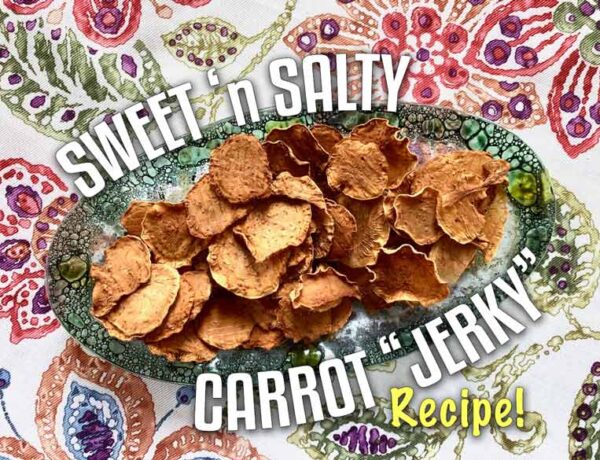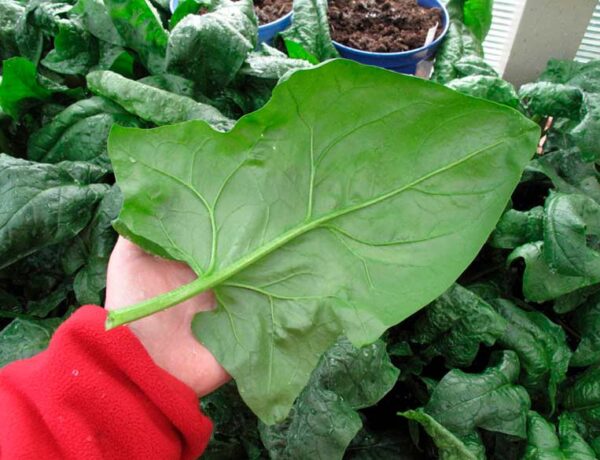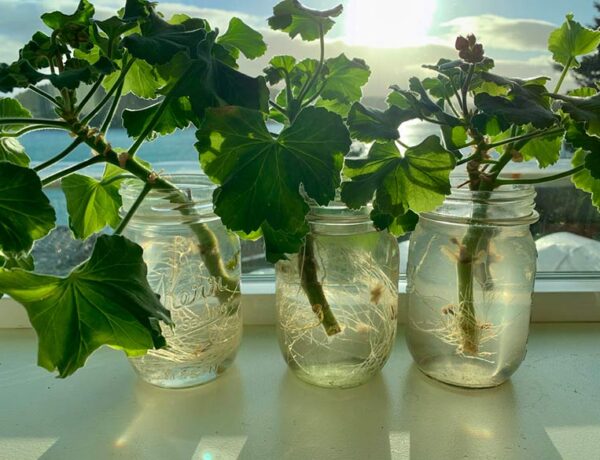As we lean into September, I can’t help but think, “Where did the time go?”
[perfectpullquote align=”full” bordertop=”false” cite=”” link=”” color=”” class=”” size=””]Autumn is springtime in reverse. — Terri Guillemets[/perfectpullquote]
When it comes to daylength, Terri is spot on: We have about 14 hours of daylight, the same amount that we (and plants) experienced in mid-April.
[Hi there! This organic gardening article was originally published in the Kodiak Daily Mirror, the hometown newspaper for Kodiak, Alaska. You can access the archive page for my past columns, written each week since 1986.
It’s a different world, for sure, thanks to COVID-19. Do you think the carrots, salmonberries, and spruce trees know any difference?
Losing 5 minutes each day
With 14 hours of daylight, and losing about five minutes each day, some folks would say that we’re on the downhill slide. You can see it on the plants’ faces: They’re weary, folks.
So for just a moment, try thinking like a plant…
First of all, it’s plain hard work to crank out blossoms in a crowded hanging basket, or generating whorl upon whorl of kale leaves along a stalk, or swelling potatoes underground. And as we delight in tomatoes finally ripening to a crimson red, the parent plants are withering in the final push.
[perfectpullquote align=”full” bordertop=”false” cite=”” link=”” color=”” class=”” size=””]Without an occasional rest, plants push themselves to an early demise. And without maintenance, they quickly appear unshaven and unshorn. — Peter Loewer, author of ‘Bringing the Outdoors In.’[/perfectpullquote]
Thinking like a plant, or
Four ways to embrace late August
1. Sprucing up
So as summer gardening shifts from high gear to low, it’s time to think about tending plants and tidying things up a little. I’m not talking about the final clean up, clearing everything out of beds in preparation of winter (I’m saving that for another week), but doing a chore here and there. That’s how you get things done stress-free.
[perfectpullquote align=”full” bordertop=”false” cite=”” link=”” color=”” class=”” size=””]Motion breeds clarity.[/perfectpullquote]
For example, as you harvest vegetables, herbs, and flowers right through fall, focus on a few chores as you go. Pick up wilted leaves, for example; broken stems, and faded blooms that wind and gravity yank to the ground. Pull weeds, particularly grasses, wintercress, and perennials seedlings that you do NOT want to see next spring.
[perfectpullquote align=”full” bordertop=”false” cite=”” link=”” color=”” class=”” size=””]Frost hurts not weeds. — Thomas Fuller[/perfectpullquote]
2. Frost is not the end of the growing season
Which brings me to a universal topic: Weather. Soon it will be time to pay closer attention to weather forecasts, especially when they call for clear nights. Clear nights can also mean a surprise frost. Round up frost covers just in case.
That said, frost doesn’t mean the end of the growing season. Crops like carrots, Brussels sprouts, beets, cabbage, parsnips, turnips, leeks and kale, taste sweeter as the temperature drops. It has to do with a principle known as “freezing point depression.” A pure liquid, such as water, freezes at a certain temperature. But when you dissolve a sugar, such as a sucrose (table sugar), in that liquid, the solution will freeze at a lower temperature.
Freezing point depression explains how plants are able to ward off damage when temperatures dip below freezing. The higher the concentration of dissolved sugar in their cells, the more they can safely tolerate freezing temperatures. This also explains why vegetables become sweeter as cold weather settles in: It’s a pleasant side effect of a plant’s effort to mobilize sugars to resist below-freezing temperatures.
Of course, plants don’t mobilize sugars to taste better, they’re defending themselves from below-freezing weather by making it more difficult for cells to freeze.
While many garden-variety plants thrive in Kodiak as “cold-hardy”, a few “frost-tender” plants are able to tolerate a few gentle frosts. These include calendula, carrots (the tops), potatoes (tops), nasturtiums, dill, fennel, lettuce, and peas.
Again, keep an eye on the weather; not just for freezing temperatures, but for dry spells as well. Plants need water, no matter the season.
3. Clean the garden, little by little
As you launch into cleaning up the garden, consider allowing some flowers to go to seed. Annual flowers such as calendula will drop seeds, overwinter, and re-sprout next spring. Seed heads also provide valuable nourishment for overwintering birds.
Hello? Weeds also re-seed. So be on the lookout for annual weeds that have gone to seed around your garden. Snip off the stems, collect the seed heads and discard them in the household garbage, not the compost pile–unless you maintain a hot compost pile that reaches 150 to 160 degrees. For perennial weeds like dandelion, plantain, hawkweed, and dock, try your best to remove what you can before winter hits.
Here’s something else to keep an eye out for as you clean up debris and work the soil over the next few weeks: If any areas of your garden suffered insect or disease problems, pull the damaged plants, roots and all. Chop them up and put them in the compost pile. Again, only if you make hot, active compost. Otherwise, dispose of them in the trash. I hope that one day, Alaska will follow Vermont’s example:
[perfectpullquote align=”full” bordertop=”false” cite=”” link=”” color=”” class=”” size=””]In Vermont, it’s against the law to throw kitchen scraps into the trash.[/perfectpullquote]
4. When a plant is done
Finally, after you harvest the last of your broccoli, cabbage, kale, and cauliflower crops, remove the whole plant—again, roots and all—to prevent root maggots from getting a stronghold next spring. This was a bad year for root maggot damage. Do not allow cabbage crops to winter over in the ground. It’s like rolling out the red carpet for pests!
Finally, all plants tire and need rest. This renewal process applies to the soil as well. There is no better time to boost soil quality than in the fall. And there is no better way to do that than with compost. I’ll follow up with compost tips soon.
Meanwhile, consider fall as not the end of the gardening season, but the beginning. The more you tend your garden now, the better off you’ll be next spring. What are you waiting for? With 14 hours of daylight, there’s a lot of living yet to do: Fly fishing for silver salmon, hiking, photography, mowing the lawn, enjoying a sunrise, making salmonberry jam.
And yes, thinking—and resting—like a plant.
++++++++++++++++++
About these garden columns… Slowly but surely I’m posting over 1,200 articles that you can access here. For personal updates, sign up for my newsletter, the Garden Shed: All Things Organic Gardening. As a thank you for signing up, you’ll receive a FREE PDF: 220 Things You Can Compost. (I’m also on Facebook and Instagram). To get in touch by email: marion (at) marionowenalaska.com





No Comments